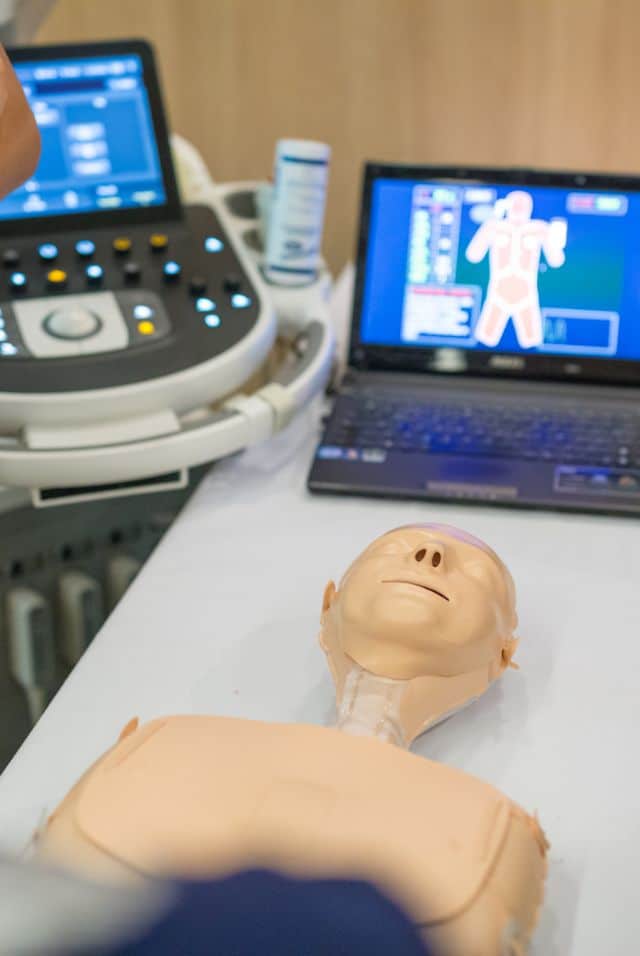Medical Simulation – Overview
Medical simulation redefines the conventional role of instructors who would actively provide information earlier while students were passive absorbers of the information. Simulation has numerous practical uses in different fields and industries, especially in the medical industry.
Simulation can mimic and supplement real-life experiences through prescribed situations and experiences are usually immersive and boosted to ensure specific learning in an extensively interactive manner.
Simulation-based training techniques, tools, and tactics are designed to provide structured learning experiences. These are also useful to measure targeted teamwork and competencies in view of specific learning goals.
Simulation is extensively used today in high-hazard professions, such as medicine, nuclear power and aviation.
Medical Simulation
In medicine, simulation-centric learning techniques are used to develop the knowledge, attitudes, and skills of healthcare professionals. This is extremely helpful for learning new and innovative treatment procedures without any risk to patients.
Simulation in medicine has increasingly become more accepted, interesting and significant as an effective and accurate learning tool. This is also essential to ensure accurate assessment for accreditation.
Today, simulation has become an integral part of medical education, with growing numbers of medical schools and healthcare institutions integrating simulation-based training into their curriculum.
Uses of Simulations
Simulations allow students to become active participants in the learning process, and teachers can also become active guides in the basic learning environment.
The use of full-body mannequin simulators for practicing anesthesia skills dates back to the 1960s, but their development and widespread application occurred over subsequent decades. The accessibility of simulation software increased in the 1980s as personal computers became more common and less expensive. However, significant advancements and widespread use in medical simulation continued into the 1990s and beyond.
This prompted a boost in developing simulation systems for military training, nuclear power generation, aviation, and space flight research.
In the early 1990s, companies like MedSim and METI (Medical Education Technologies, Inc.) began offering comprehensive anesthesia simulation modules, marking an advancement in simulation technology. Several simulation concepts were slowly integrated for anesthesia, emergency medicine, critical care, internal medicine, and obstetrics.
Today, simulator models can create computerized models that closely match human physiology.
Simulation-centric teaching in the medical field is necessary today as it provides an effective learning technique and simultaneously resolves ethical and practical dilemmas.
Simulation-based learning modules in the medical field have become invaluable for training interdisciplinary medical teams through realistic scenarios and equipment that allow for constant training and practice without any lag. This is extremely helpful in achieving complete mastery of the skill or procedure.
This adds dimension to conventional teaching while reducing errors and enhancing performance.
Key Elements of Medical Simulation Programs

Medical simulation programs provide experiential training and involve using a digital model of a patient’s physiology or a specific part of the body. It is easy to change the characteristics and behavior of these models to represent complex and numerous situations.
An advanced medical simulation model aims to simulate the actual physical system closely, though achieving the same complexity and precision is an ongoing challenge.
Simulation systems also include a model executor. This software program interacts with the learner using a specified user interface. A recording interface captures the computerized model’s stimuli and learner behavior during the training.
This is extremely helpful in analyzing the learner’s performance and suggesting the required corrections and improvements. The user interface is usually connected to web-based or installed applications and can be used with multiple devices, such as a tablet PC or a smartphone.
Benefits and Uses of Medical Simulation
Medical simulation allows the learner to memorize the skills required in real-world scenarios. Hence, it is extremely useful in learning and practicing various healthcare and safety-related skills and concepts.
Medical simulation is used to enhance skills and support education in various medical subjects, including managing conditions like sepsis and practicing procedures like CPR, among other life-saving techniques.
Simulation lets medical staff, healthcare professionals, and nurses develop and hone their skills repeatedly without risk to patients.
Simulation programs can teach new and pioneering techniques and equipment, allowing medical professionals to practice and manage complicated medical situations.
Medical professionals can also apply these skills to analyze and rate their performance in real-life scenarios.
Simulations are usually guided scenarios to learn and, therefore, effectively controllable. On the other hand, in real life, the instructor and learner have less control over the scenario and have more risk of errors.
Using simulation, pausing and controlling the scenario in many ways is easy. This way, learners have more time to register what they learn and practice their skills in various scenarios.
Medical simulation programs also provide training in functional and technical expertise. They can improve decision-making and problem-solving skills, communication and interpersonal skills, and team-based competencies.
Conclusion
Medical simulation provides empirical knowledge and helps develop practical know-how. Simulations are extremely immersive and interactive, making learning new technical skills and equipment easier.
Medical simulation is finding new avenues in medical and healthcare training worldwide and is expected to become an integral part of the healthcare learning industry soon.
See Also
Best Medical Schools in the US
Electrocardiogram Patient Education